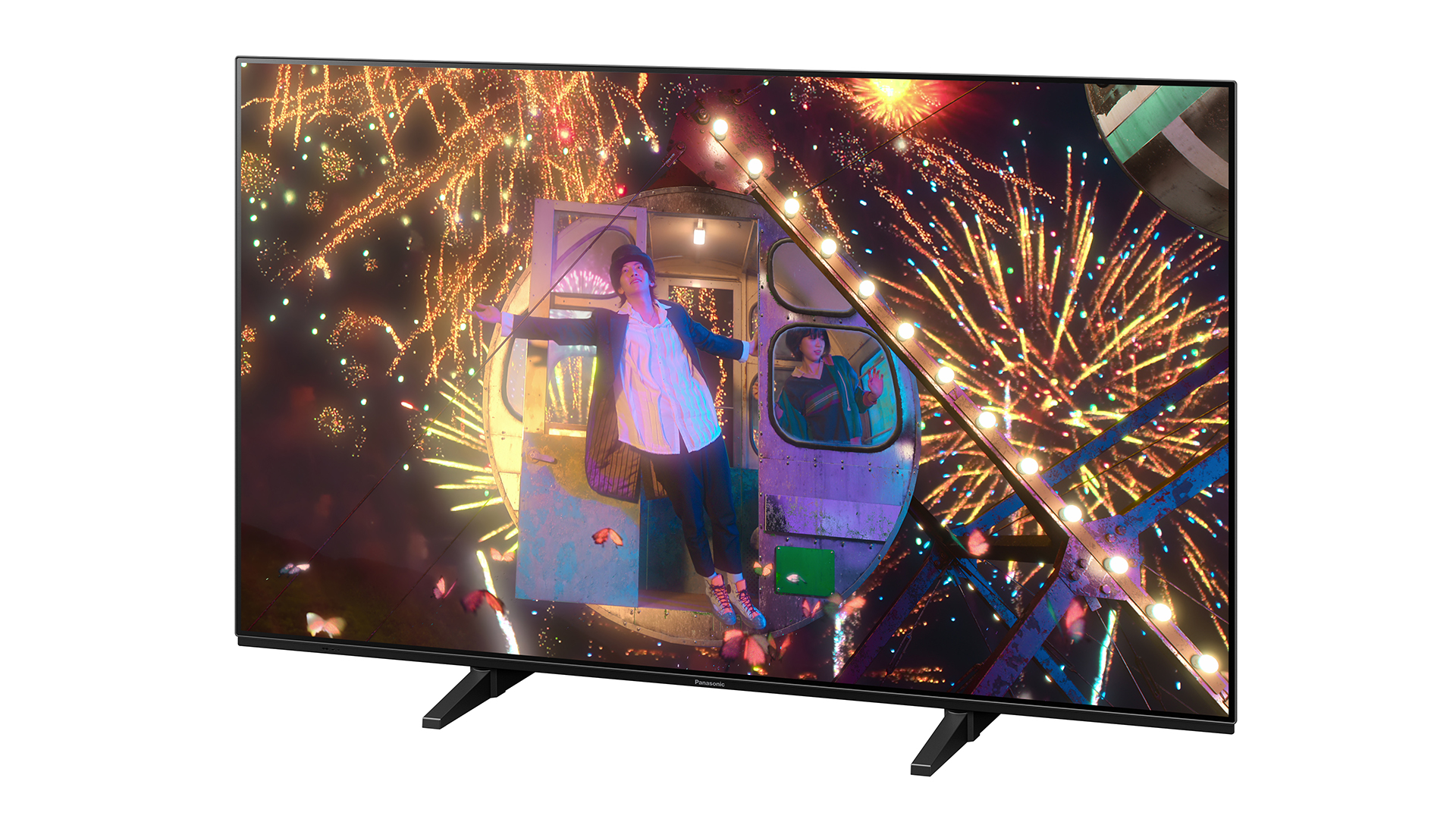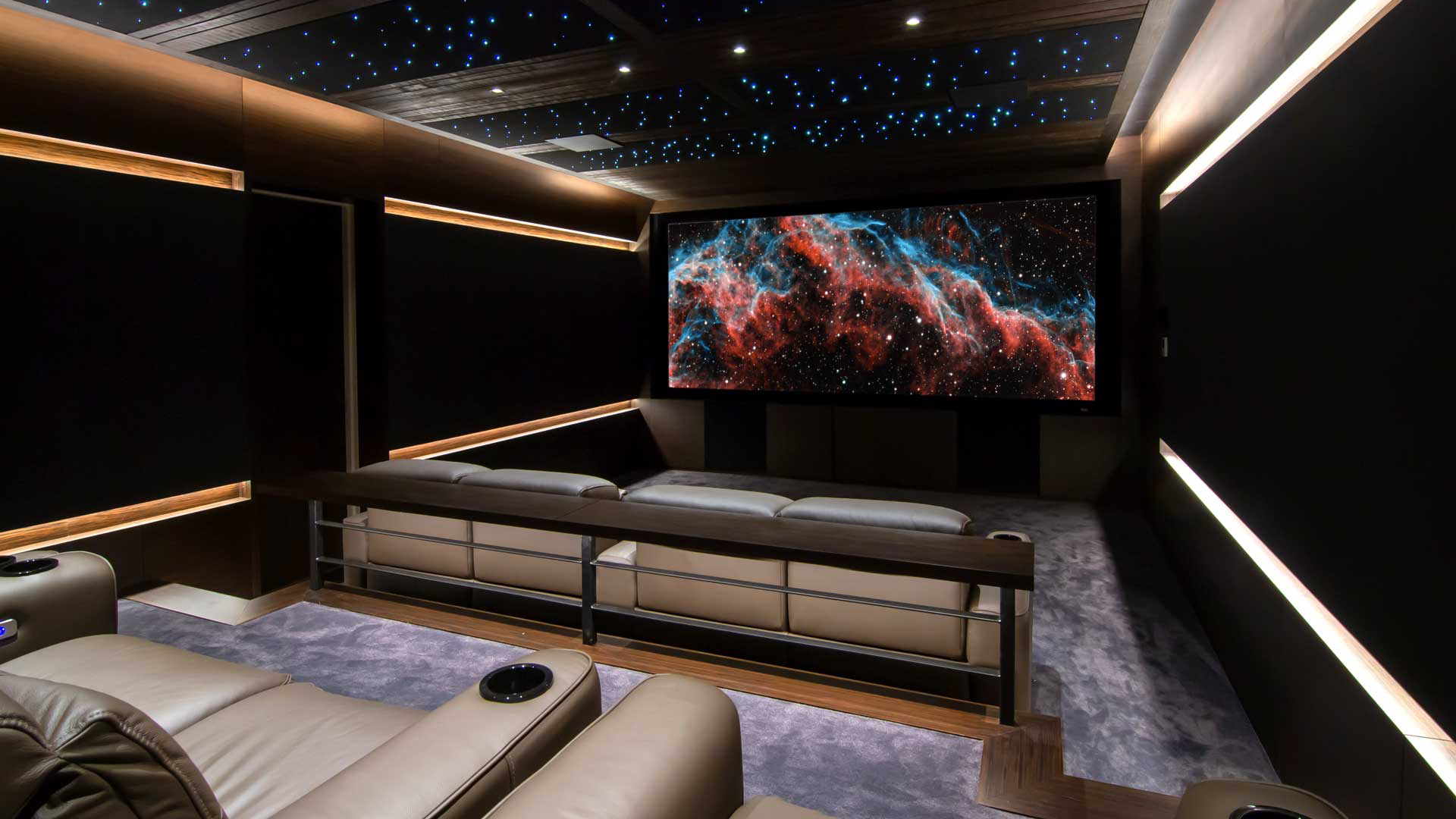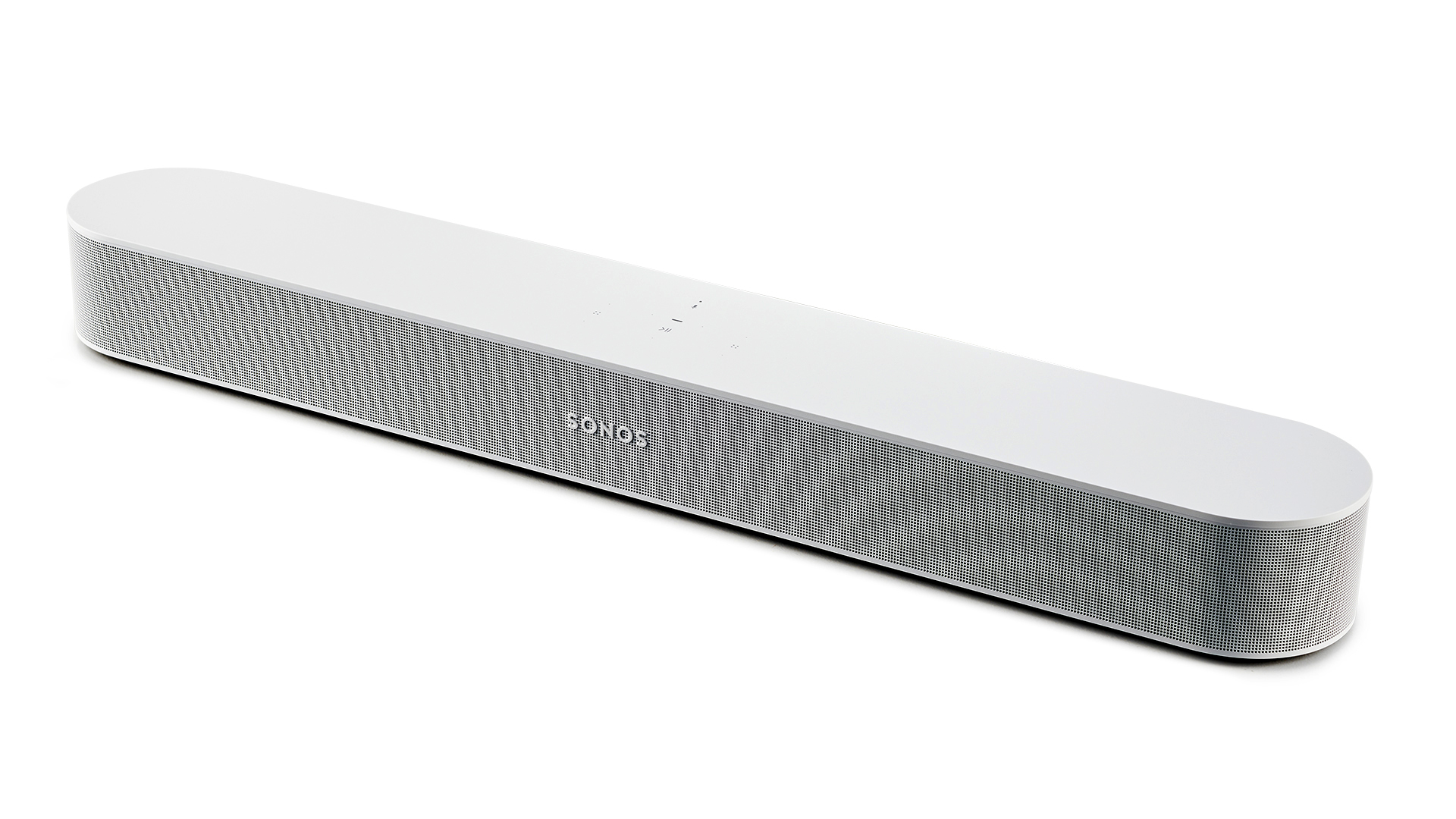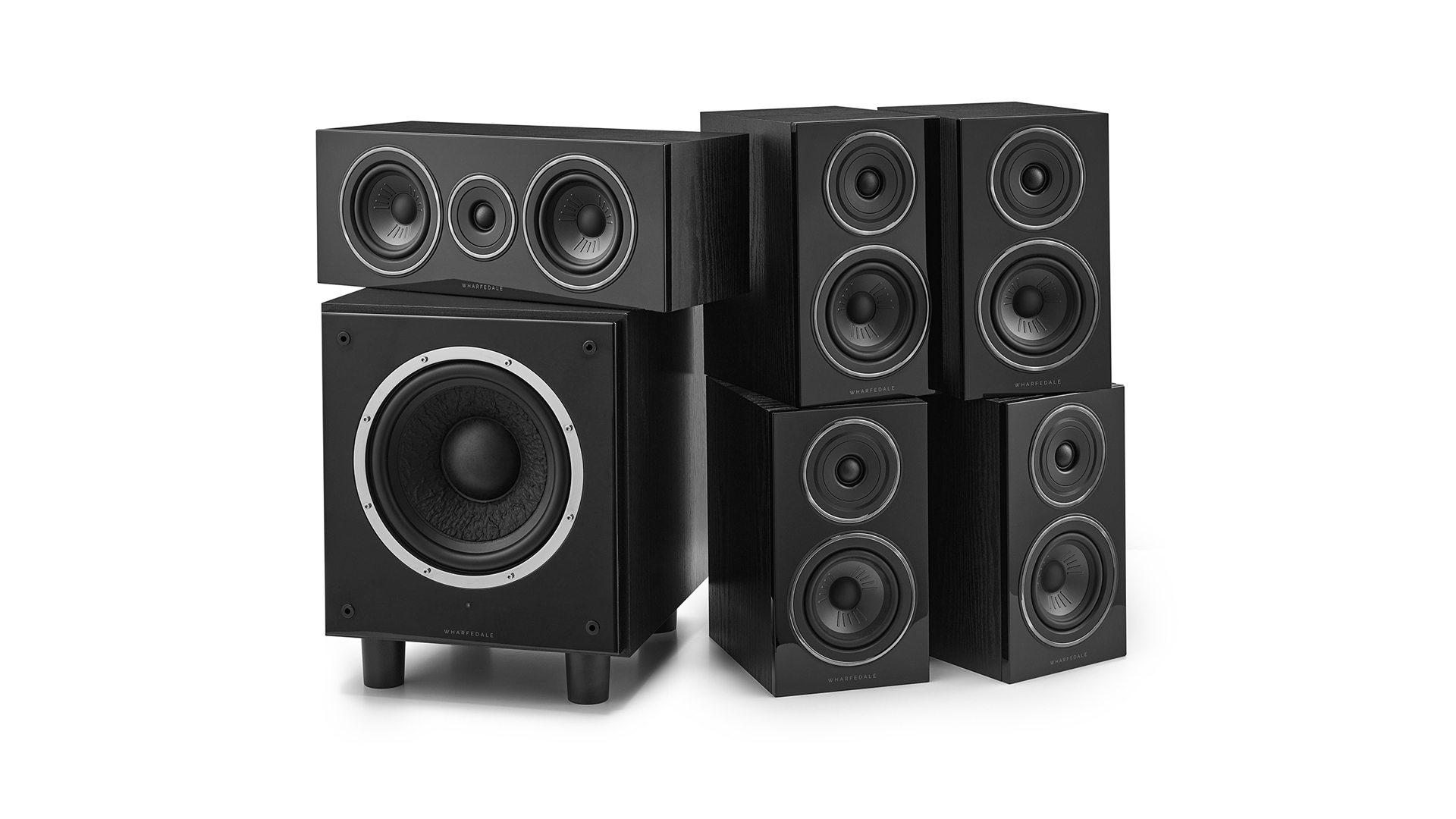Don't waste your money on a new TV – make a cost-effective system upgrade instead
Your screen is probably fine, so make sound the priority

We all know what it's like when you're eyeing up a tasty big screen purchase that you hope will revolutionise your living room.
You're on the hunt for a TV, but not just any TV. This will be the TV that make sports more entertaining, films more dramatic, and maybe even improves your gameplay. You while away your evenings planning a long future together, patiently comparing prices and model numbers, repeatedly measuring the distance from your wall to your sofa, apprehensively checking HDMI 2.1 specs and chanting positive affirmations while you wait for the perfect deal to manifest.
But as you're daydreaming of vivid colours, buttery smooth motion and a few thousand more pixels, can I suggest you pause before clicking 'buy' on that massive OLED and consider for a moment if a new TV is really what you need. Or, more to the point, is it your screen that's the problem or does the issue lie elsewhere?
George Lucas famously said that sound is 50 per cent of the movie-going experience, while Danny Boyle puts the figure at a less conservative 80. Still, we'd hazard a guess audio figures far below that in the consciousness of eager screen shoppers, if at all. The truth is that even with prices of consumer goods rising, many people will happily drop a few thousand pounds on a shiny new screen, but very few would contemplate spending even half as much on a speaker system to go with it. Most don't bother with a dedicated sound setup at all.
Sound matters

It's understandably easy to overlook the impact of sound when watching TV, quite simply because it's invisible. As humans, we're hardwired to love visuals, with more of our neurons dedicated to vision than all the other senses combined. While our brains respond excitedly to bright, flashing, colourful screens, sound (especially what we may think constitutes 'good' sound) takes a backseat, partly because it feels much more subjective.
Since we can't see audio, it's widely misunderstood or just plain overlooked. And that's not just by audiences. Even professionals within creative industries such as film, TV and theatre, where it's pretty integral to storytelling, struggle to appreciate the significance of the role it plays.
Audio is fundamental to how narrative, sentiment and character is perceived by an audience, eliciting an emotional and often physical response. It's hard to imagine Jaws would have the same impact without its tension-inducing score, nor Jurassic Park without its quaking T-Rex footsteps, nor the dialogue from... well, pretty much any film that George Lucas didn't direct.
Get the What Hi-Fi? Newsletter
The latest hi-fi, home cinema and tech news, reviews, buying advice and deals, direct to your inbox.
The problem with TV speakers
Of course, you may be thinking that if a TV already contains built-in speakers, buying an extra sound system is an unnecessary and extravagant affectation, particularly in this economy. But that's a bit like saying that if your iPhone has Apple Maps, then you don't need Google Maps. We all know that just because a piece of tech can perform a function doesn't mean that it will do so well.
Why aren't most TV speakers up to the job? In the quest for wafer-thin, flat-screen perfection, speakers became smaller and were moved from the front face to the back or underneath or wherever they could be elegantly squirrelled away. You don't need to be an acoustics expert to know that large speakers facing you are clearer and louder than tiny speakers pointing in another direction and, unsurprisingly, these streamlined drivers don't pack much in the way of punch or range. Clever audio bods do their very best to overcome these physical restrictions and it's fair to say that the newest OLEDs and QLEDs sound better than they probably should, but they're ultimately always going to be limited.
Conversely, as our TV sound has deteriorated, soundscapes for film, television and gaming have become much more sophisticated and dynamic, with 3D audio formats such as Dolby Atmos and DTS:X giving designers a whole new palette of tools with which to paint sonic pictures. The resulting work has multiple layers of complexity and nuance that use score, effects, dialogue and space to bring us deeper into the story.
But the speakers in your TV were likely constructed with the primary intention of just conveying dialogue as clearly as possible, which comes at the detriment of pretty much everything else, resulting in tinny music and feeble action sequences. And with actors increasingly unwilling to coax their lips to perform anything beyond a light mumble lest the illusion of 'reality' be shattered, TVs are even struggling with speech.
While that new screen may have more HDMI 2.1 ports, dimming zones or pixels than your old one, the chances are that the quality of the content you're streaming doesn't warrant the upgrade in technology. But even a simple BBC drama in stereo will be significantly improved with the addition of a decent pair of speakers.
If you enjoy watching great TV and film at home, then you would undoubtedly benefit from an audio upgrade before taking the plunge on a new TV. And the good news is you don't have to spend anywhere near as much as you might think to notice a tangible difference. Below you'll find some of our favourite soundbars, speakers and powered speakers along with up-to-date pricing.
We only ever suggest products we think are worth recommending which is why you won't find the new affordable soundbar from Sonos, the Ray, featured. Just because you might be on a budget, doesn't mean you should settle for poor performance and we think that buying one of these over a new TV will instantly improve your telly-watching experience and save you a fortune.
Soundbars

One of the easiest ways to switch up your TV sound is with a soundbar. You've probably walked past these inauspicious-looking slabs on your way to the TVs in John Lewis, or you may have even politely declined to be upsold one from an enthusiastic shop assistant.
Although they don't look that exciting, soundbar technology has come a long way since first being conceived as a TV sound upgrade for those who don't have the space or the urge to invest in 'proper' speakers. You can now take advantage of a wide variety of models, from small speakers packed with streaming smarts to premium Dolby Atmos-enabled soundbars designed to envelop you with sound.
Soundbars sit just below your screen or can often be neatly fitted to the wall and, depending on the model, will connect to your TV via HDMI, optical or analogue cable. Some soundbars are just a single unit, while others come with separate wireless subwoofers or surrounds. While prices can get slightly ridiculous for flagship models or the likes of the Sennheiser Ambeo, there are alternatives that will suit even the tightest of spaces and smaller budgets.
The five-star Sonos Beam Gen 2, with virtual Dolby Atmos is an ideal choice, as is the even more affordable Majority Sierra Plus, which includes upward-firing drivers. Then there's the really cheap and cheerful Hisense HS214. They might not be as sophisticated in spec as premium models but they will still be a big upgrade your TV's sound and provide a more cinematic experience. In short, there are excellent options at a variety of price points that will put your TV's speakers to shame.
Check out our rundown of the best budget soundbars, best soundbars and best Dolby Atmos soundbars for full specs and feature lists.
Speaker packages

You may think surround sound is the preserve of those lucky enough to have basement screening rooms, but for less than the price of a flagship soundbar you could kit yourself out with some actual grown-up speakers and an amp to drive them that will make you wonder why we bother to put speakers in TVs at all.
There are plenty of competitively priced bookshelf-sized speaker packages available at the moment, such as the Award-winning Wharfedale Diamond 12.1 HCP or Q Acoustics' 3010i 5.1 Cinema Pack, either of which will provide you with five top-class full-range speakers and a sub that will instantly prompt you to rewatch all your favourite movies to hear what you've been missing out on.
You'll need to budget for the cost of an amp to drive these passive speakers, and we'd generally suggest a suitable pairing would be one that's around half the price. Both Denon and Marantz have 5.2 AVRs that fit the bill, while Yamaha's entry-level 5.1 model is also in the right ballpark. Most brands pack even the most affordable AVRs with plenty of features, so you could also be adding wi-fi streaming, voice control and a whole bunch of extra HDMI inputs to your system too.
And although we'd always advocate for surround sound where possible, if you don't have the space for rear speakers, you can simply plump for a pair of front-facing cabinets driven by a quality stereo amp for half the price.
If you want more info, here are our round-ups of the best speaker packages and best AV receivers you can buy.
Powered speakers

If you'd like to keep cables and boxes to a minimum then a pair of powered speakers could be the answer. Yes, there's the premium-priced KEF LSX to tempt you, but there are more affordable options such as the Ruark Audio MR1 Mk2, Focal Shape 65 or Steljes Audio NS3. These models will connect to your TV using optical or 3.5mm aux inputs and, while they may not be marketed as AV-specific products, an insightful pair of 'desktop' speakers will transform your TV viewing and also upgrade your music streaming while you're at it.
And if you're actually not interested in spending any money whatsoever but you already own a speaker with an aux-out for listening to music, well why not have a rummage around in that cable drawer for a mini jack-to-jack and give it a whirl? It'll almost certainly sound better than your TV's speakers.
Here's our guide to the best-powered speakers you can buy and our pick of the best desktop speakers.
MORE
The best Dolby Atmos movie scenes to test your TV speakers
Mary is a staff writer at What Hi-Fi? and has over a decade of experience working as a sound engineer mixing live events, music and theatre. Her mixing credits include productions at The National Theatre and in the West End, as well as original musicals composed by Mark Knopfler, Tori Amos, Guy Chambers, Howard Goodall and Dan Gillespie Sells.
